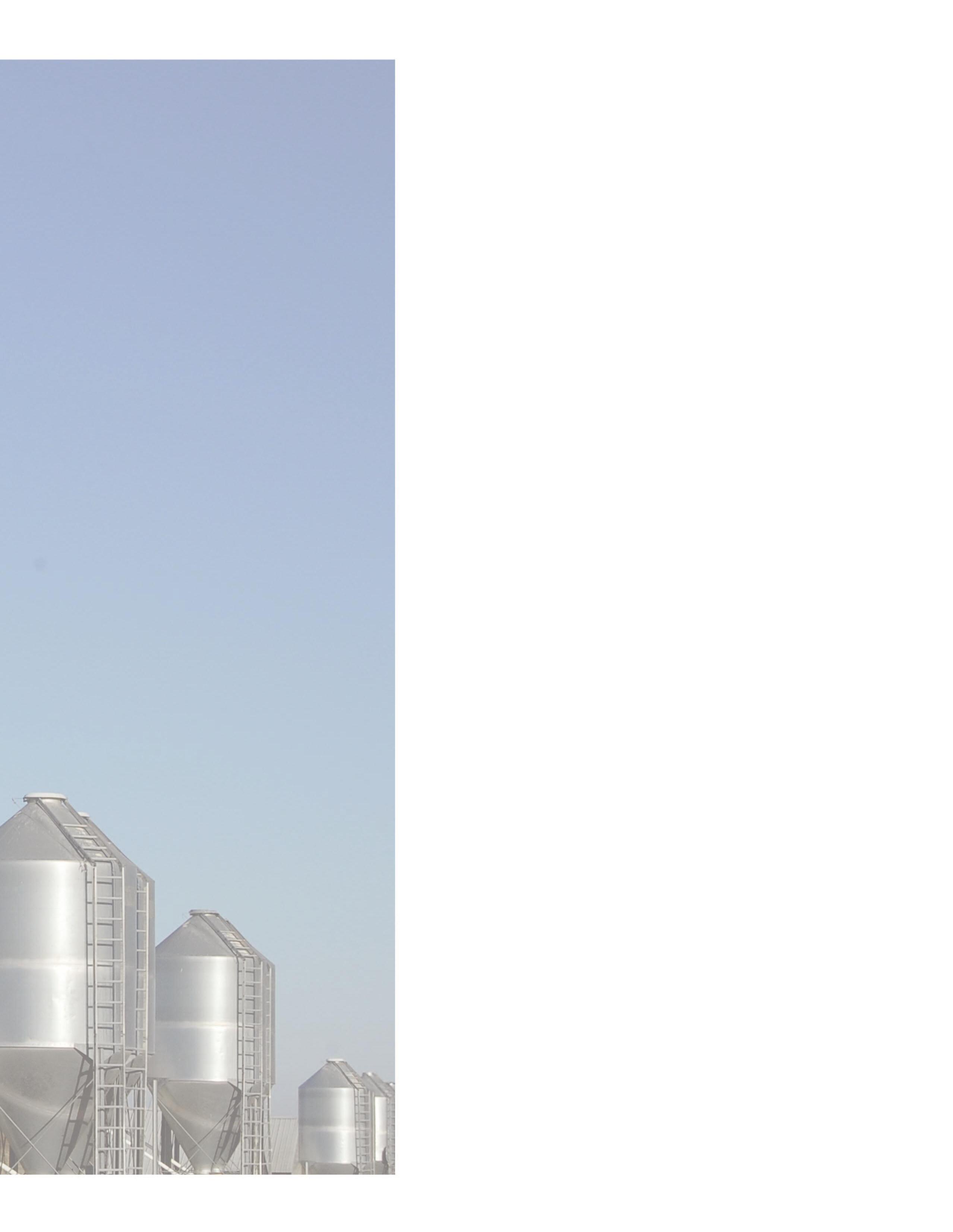
6 minute read
When the Title Match is Big Ag vs. Hobby Farms, PETA Wins
By: Brandi Buzzard Frobose
Reprinted
with permission from Drovers
Fair Oaks Farms, a progressive dairy, pork and crop farm in northwest Indiana, was recently the subject of some less than savory media attention. Four em ployees, three of whom had al ready been fired by the time the footage surfaced, were seen com mitting heinous acts of animal abuse, with zero remorse for their actions. As the video made its way across social media and television news, the perpetrators were condemned, cussed and pursued by law enforcement. Rightfully so, be cause animal abuse is taken very seriously by the agriculture community and should not be tolerated, ever.
However, as Fair Oaks Farms reeled from the unexpected blow and struggled to recover, another vein of hateful, sinister commentary was making its way across the Internet. Can you guess what it was?
If you said criticism of “Big Ag,” ding, ding – you win! Except not really, because when big farms and small farms quarrel, no one wins … except PETA, HSUS and other animal rights extremists.
Before we go further, let me say this: big is not bad. Small is not bad. Bad is bad. Again, for those in the back, bad behavior is bad for the ag sector, regardless of whether it stems from a 1,000 head dairy or a chicken farm with 20 birds.
When the blame for animal abuse is taken off the abusers and placed on the farm owners, our customers – aka grocery shoppers – see this and take it as a truth. They perceive that big farms must be bad because they are larger and, generally, have more employees than just one or two family members. They start to distrust the grocery store and any farmer they can’t see face-to-face, which for local food markets is great. But for the agriculture community in general, is severely detrimental.
Now, let me stop those who are fixing to throw me into the flames. The vehemence is not one-sided. Because for every vitriolic sneer directed towards large farms and ranches, there is an equal and opposite reaction directed at their smaller cousins; more often than not in the form of “hobby farm.” This line of criticism is just as harmful as its counterpart and also lends to distrust of farmers, ranchers and food. Circling the wagons and firing inwards is a waste of time, passion and ammo, folks.
In case you aren’t a statistics lover like myself, I’d love to share some data with you. There are about 330 million people in the United States, and despite what your local news station may tell you, we all do have something in common. We need to eat – emphasis on need. And some choose to only eat what we can grow. No doubt this involves a lot of planning, dedication and, to a certain extent, sacrifice in order to provide 365 days of sustenance from one or two seasons of growing and harvesting. However, those that engage is a self-sustaining lifestyle do so with the belief that they are doing their best for their family, in which they are totally rightful and should be applauded. I truly respect those who can live completely off the land and are content to eat seasonally. On the other hand, there are those of us (cough, me) who relish the ability to eat strawberries, green beans, ice cream and bacon year-round, courtesy of the local WalMart. I appreciate the availability of easy access to all foods, year-round due to our robust and complex U.S. food system, which includes trade with other agriculture-rich countries. Except rhubarb, I can never find that stuff out of season.
Incidentally, many of us are commodity producers AND hobby farmers/ranchers. How so? I’ll use my husband and myself as examples to highlight how labeling each other does no good.
We operate a seedstock Gelbvieh and Balancer ranch and our herd, according to the 2017 Ag Census, is larger than the national average. However, we are small according to other size measurements such as number of employees and acres owned, plus we both have full-time, non-ranch employment. So, technically we could be classified as hobby ranchers since it’s not our main income. However, when we have bulls that don’t make the seedstock cut (technically, they are getting “the cut”), they are marketed through the commodity beef supply via auction market, backgrounder and feedyard; which technically makes us part of “big beef.” How many labels can be thrown on one farmer or rancher before things get tedious and confusing?
The gist of the issue is that when we label things –people, food, industries, etc. – we lose focus of the main goal, which should be to produce healthy food in an ethical, profitable and sustainable way. That’s the big picture, and all farmers and ranchers – small and large – are fully capable of achieving that goal. Honestly, we’d probably all reach the goal more quickly if we’d work together instead of hurling insults at each other. The world needs all kind of farmers and ranchers, of all sizes, shapes and backgrounds, to fulfill our food needs.
Does anyone else feel like labels are further segregating us while PETA just watches, licking their vegetables? As we tear each other down, we weaken the ag sector and make ourselves tremendously vulnerable to outside perils. I can confidently say that what qualifies as a large farm or small farm should be of no consequence and we ought to be eyeballing a very real threat - one that presents itself in the shape of a hockey puck and is made of pea protein.

Livestock Producers: Storing Wet and Modified Distillers Grains

By: Sara Bauder and Warren Rusche, South Dakota State University Extension
Reprinted with permission from Drovers ne of the primary challenges for livestock producers in the coming months could very well be feedstuff cost and availability due to the fact that the corn planted acreage and crop progress are both well behind normal benchmarks.
One opportunity that might help cattle feeders proactively secure feed supplies would be storing wet or modified distiller’s grains now to be fed at a later date. The following table shows the USDA reported average prices in South Dakota for corn as well as modified and wet distillers for the last week in June in 2019 compared to 2018. Corn prices in 2019 are more than $1 per bushel greater than a year ago. However, reported prices for both modified and wet distillers are nearly identical for both time periods.
Securing and storing a supply of distillers now for feeding later would be one way to take advantage of what could be relatively less expensive distillers compared to waiting until fall. Of course, predicting commodity markets is an inexact science at best, but one could easily make the case for much higher feed costs next fall. If nothing else, purchasing distillers now takes advantage of a more favorable corn:DGS price ratio and locks in at least a portion of feed costs for the upcoming year.
Storage Options
South Dakota State University has been one of the leaders in distiller’s grains utilization. A portion of that work has identified several different storage options available that have been successfully utilized to store wet and modified distiller’s grains in either bunkers for bags.

Storing WDGS can be challenging because the product by itself does not readily stack or pack in a bunker or pile. One approach to solve that problem has been to mix about 70 to 80% WDGS and 20 to 30% roughage on an as-fed basis. That mixture can then be stored in either a bunker silo or pile and covered with plastic. Another possibility is storing WDGS in a silage bag; in this case care needs to be taken to avoid excess pressure on the bag to prevent rupture.
Because MDGS contain less moisture, they lend themselves better to being stored in a bunker or pile without being mixed with other roughage compared to WDGS. In some cases mixing 10% roughage would make packing a bunker silo easier. Using either a silage bag or covering a pile or bunker with plastic will help prevent spoilage and dry matter losses until the start of the feeding period.
The Bottom Line
When considering whether or not to store distiller’s grains, producers do need to consider labor costs, costs of cover or bags, and in the case of WDGS the availability of low-quality roughage for mixing. Availability of modified or wet distillers could be an issue, depending upon local plant production schedules and product demand. There is also the impact on cash position and working capital to consider when pre-paying for a large quantity of feedstuff.
We must work each day to be completely honest in every moment, even if it hurts, even if it makes us look dumb, and even if it makes us appear weak in our own eyes.










